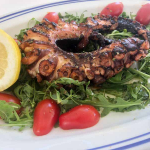In recent years, freeze-dried foods have become incredibly popular among adventurers and outdoor enthusiasts. But where did this fascination with freeze-dried meals originate? Well, it may surprise you to learn that they have been around for decades, originating from space exploration. Freeze Dried foods were first used by NASA in the early 1960s, and since then, their popularity has exploded. In this blog post, we will take a look at how these meals are made, their benefits, and why you should consider incorporating them into your diet.
Freeze-dried foods are made by removing nearly all the water content from the food item at a very low temperature. The process of freeze-drying involves three main stages: freezing, sublimation, and desorption. First, the food item is frozen at a low temperature. Second, the frozen water in the food item is removed through sublimation using a vacuum. Lastly, the temperature and pressure are raised to remove any of the remaining water. The result is a dry and lightweight food item that has an extended shelf life and is easy to transport.
The long shelf life of freeze-dried foods makes them popular among hikers, campers, and those who enjoy outdoor activities. These meals can be stored for years or even decades without losing their nutritional value or taste. This makes them the perfect meal to pack on a long hike or camping trip. They are also great to have on-hand in case of an emergency or natural disaster.
Freeze-dried foods are not only convenient but also offer a range of health benefits. They are loaded with essential nutrients and vitamins, making them an excellent choice for those who are looking for quick and healthy meal options. Additionally, the low water content of freeze-dried foods makes it an excellent option for those who are looking to lose weight. This is because freeze-dried food contains fewer calories and an increased concentration of nutrients, making it a healthier alternative to traditional snack foods.
One of the most significant benefits of freeze-dried food is their lightweight and easy-to-transport nature. With the dehydration process, these meals are significantly lighter in weight than traditional foods and take up much less space. This makes them the perfect meal choice for backpackers, adventurers, and athletes who need to conserve space and reduce the weight of their gear. Thus, freeze-dried foods are incredibly versatile, providing a healthy, nutritious option for anyone on-the-go.
Conclusion:
Freeze-dried foods have come a long way since their inception in space exploration. As people have become more health-conscious and incorporate outdoor activities into their lifestyles, they have become a popular food option. They are lightweight, easy to store, have a long shelf life, and offer great taste and nutritional value. Furthermore, with new advancements in preservation techniques and an increase in consumer demand, the supply of freeze-dried foods in the market has expanded greatly. Whether you are venturing into the wilderness or simply looking for a healthy snack, the convenience and benefits of freeze-dried foods make them worth considering.










